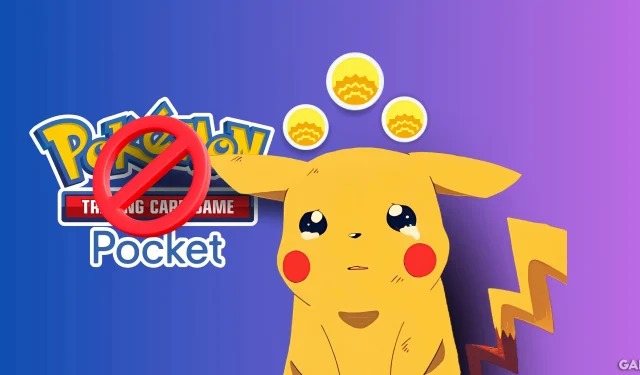
Pokémon Pocket has successfully transitioned the thrill of collecting and playing Pokémon cards into a digital format, maintaining essential features of the traditional trading card game. Among its unique mechanics is the Paralyzed condition, which a limited number of Pokémon can induce. While Pokémon Pocket introduces slight alterations to the implementation of Paralysis, the fundamental rules remain intact. This guide offers a thorough examination of this Special Condition, detailing its effects, recovery options, and strategic deck-building tips.
Understanding ‘Paralyzed’ in Pokémon TCG Pocket

The ‘Paralyzed’ status is a Special Condition that immobilizes an opponent’s Active Pokémon for one full turn. When a Pokémon is afflicted by Paralysis, it is unable to attack or retreat, remaining in place for the duration of the turn. This condition automatically dissipates during the opponent’s subsequent Checkup phase, just prior to the commencement of your next turn.
Comparing Paralysis to Asleep



Both Paralysis and Asleep conditions share the capability to prevent an opponent’s Pokémon from executing attacks or retreating. However, they differ in recovery mechanics. A Paralyzed Pokémon automatically recovers during the next Checkup, while an Asleep Pokémon requires a coin flip to wake up. Additionally, opponents can remove the Asleep status through specific counter-strategies, such as evolving the Pokémon or retreating it.
Paralyzed Mechanics: Pokémon Pocket vs. Physical PTCG
In the traditional Pokémon Trading Card Game, Trainer Cards, like Full Heal, can eliminate the Paralyzed condition. Currently, Pokémon Pocket lacks equivalent counter-Paralysis cards, yet the underlying mechanics of paralysis align with those in the classic format—namely, a Paralyzed Pokémon cannot attack or retreat for one turn.
Cards Featuring the Paralysis Ability

- Pincurchin: Flip a coin; if heads, the opponent’s Active Pokémon becomes Paralyzed.
- Elektross: Flip a coin; if heads, the opponent’s Active Pokémon becomes Paralyzed.
- Articuno: Flip a coin; if heads, the opponent’s Active Pokémon becomes Paralyzed.
In the Genetic Apex expansion, only three cards have the ability to inflict Paralysis: Pincurchin, Elektross, and Articuno. Each of these cards relies on luck, utilizing a coin flip to determine the success of their paralysis effect. This dependence on chance may render the strategy less reliable, thus characterized more as a gimmick rather than a solid deck foundation.
Methods to Recover from Paralysis

There are four effective strategies to counter and recover from Paralysis in Pokémon Pocket:
- Wait until the next round: The Paralysis condition will expire at the beginning of your next turn.
- Evolve the afflicted Pokémon: Evolving is the fastest method to shake off Paralysis.
- Retreat the Paralyzed Pokémon: Utilizing cards like Koga that compel a retreat can successfully remove the Paralysis status, as Special Conditions do not apply to Pokémon on the Bench.
- Utilize a Support card: Currently, only Koga offers a countermeasure against Paralysis as a Support card, applicable only if the affected Pokémon is Weezing or Muk. Upcoming expansions might reveal more counter options.
Optimal Paralysis Deck Strategies

By itself, the Paralysis mechanism does not serve as a trustworthy basis for a competitive deck. To maximize its potential within the Pokémon Pocket meta, consider combining it with the Asleep condition. A strong deck configuration could include Articuno and Frosmoth, leveraging both Paralysis and Asleep effects across three different attack lines: Articuno, Frosmoth, and Wigglytuff ex. Below is a suggested deck list to create an effective Paralyze-Asleep synergy.
Paralyze Deck Details
| Card | Quantity |
|---|---|
| Wigglytuff ex | 2 |
| Jigglypuff | 2 |
| A dream | 2 |
| Frosmoth | 2 |
| Articuno | 2 |
| Misty | 2 |
| Sabrina | 2 |
| X Speed | 2 |
| Professor’s Research | 2 |
| Poke Ball | 2 |




Leave a Reply